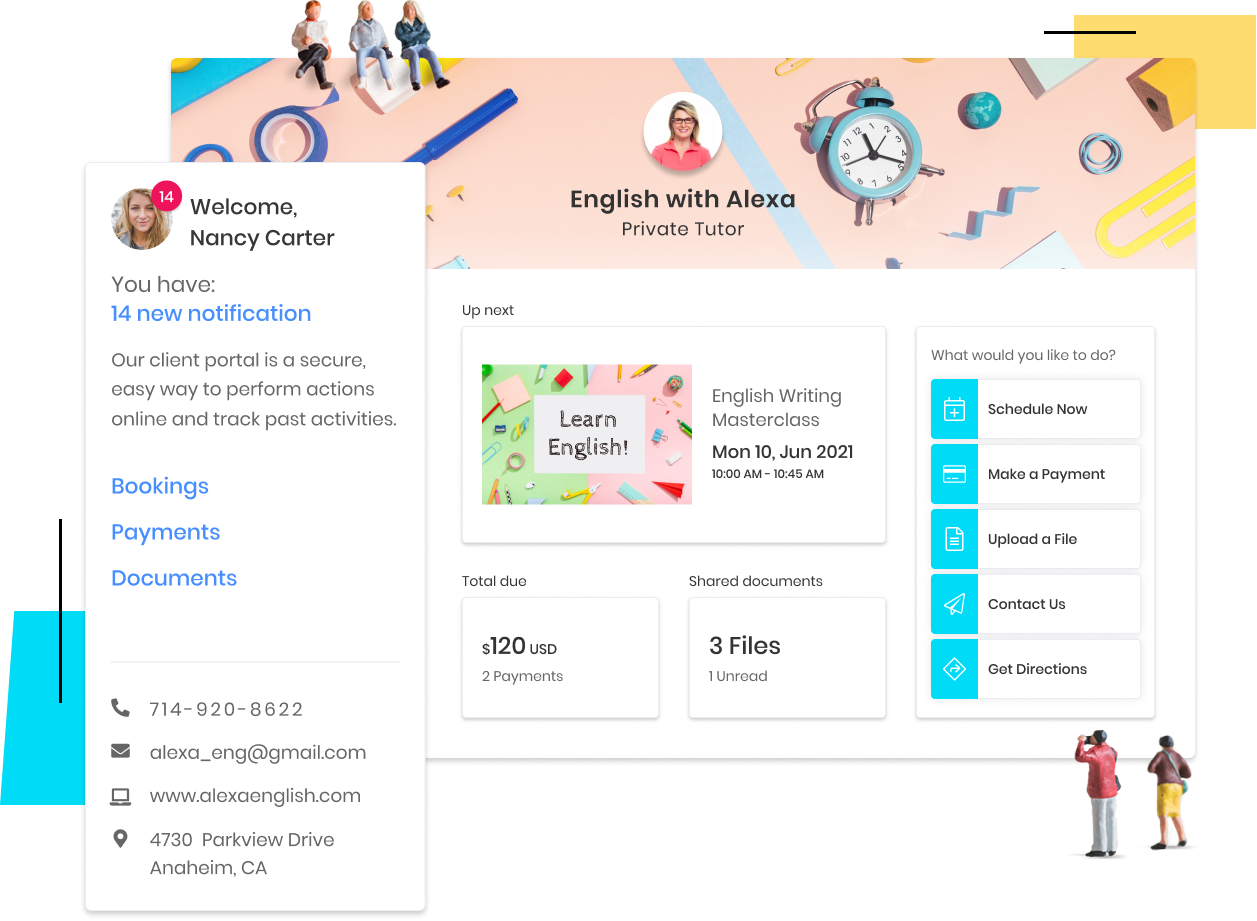Online tutoring management software
Build a teaching business you’re proud of.
Manage your students, classes, payments, and marketing from one app.
*No credit card required
Manage your students, classes, payments, and marketing from one app.
*No credit card required
“I can take this business anywhere and everywhere. I’m not stuck at a computer. vcita lets me spend more time in the pool with clients and less time behind a computer.”
Margarethe Denk
Swim-arts swimming school
vcita helps teachers and tutors like you streamline and automate your most time-consuming tasks: from class scheduling and homework submission, to collecting payments and attracting new students.
Be in your element. Spend less time coordinating over the phone and more time with students.
Everything you need for running a successful teaching business
Invite students to discover, book, and pay for private or group classes online.
No more loose papers! Share, accept, and grade papers and assignments online.
Charge students and parents for classes or class subscriptions online from any device.
Use automated text messages to remind students and parents about upcoming bookings.
Use easy-to-send email and text message campaigns to reach more students and fill up every class!
Leverage our seamless video call integrations to grow your virtual classroom and tutor students from anywhere in the world.
Self-service: anytime, anywhere
No more calls around the clock.
Invite students and parents to book, pay, share a document, or get in touch from your very own branded student portal.
Better workdays start here
Or click here to schedule a demo with one of our teaching business solution experts.
Copyright 2025 vcita Inc. All rights reserved.

















